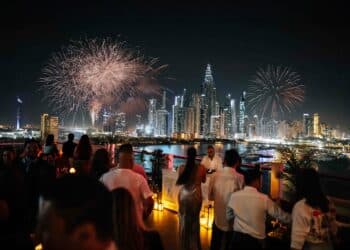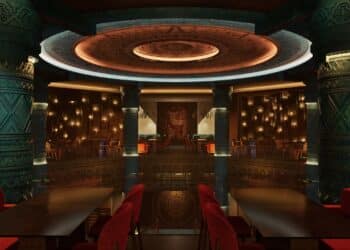As the Sultanate of Oman seeks to outgrow its status as a niche luxury destination, the initial steps towards an ambitious and prosperous future for Oman’s hospitality sector is well underway, explains Zoltan Kali, chief strategy officer, Omran Hospitality.

Oman is known for its hospitality and its warm welcome to visitors, and nowhere is this more apparent than in Oman’s hotels. The Sultanate has some unique properties, which has positioned the country as a luxury destination for travellers seeking a genuinely different experience. The positive news for Oman is that there are many more of these properties set to open in the coming years – which is precisely what Oman needs. Currently demand for Oman’s hotels has risen to a level far outstripping supply which has led to high room rates, especially compared to other regional countries.
The many developments in the pipeline will spur on the change needed to help create a diversified offering attractive to a wider audience. The most imminent development are the three new hotels set to open in 2017 which will add 900 keys to Muscat’s room supply. This increase in capacity is likely to create some short-term pressure on current hotels, but there will be long-term benefits to the market by reducing room prices and creating a more sustainable balance.
Two of these new hotels are at the Oman Convention and Exhibition Centre (OCEC) precinct, which is the critical first step of phase one of the Madinat Al Irfan Urban Centre, of which Omran is the master developer. Al Irfan is one of the significant developments that will invoke a major revitalisation of Muscat’s hotel and hospitality industry. With more than six million square metres of mixed-use space, Al Irfan is the central focus of creating a new urban fabric for the capital, delivering a community which will benefit both residents and visitors alike. A mix of residential offerings, commercial opportunities, leisure and entertainment facilities along with hotels will create an important business hub due to its strategic location near Muscat International Airport. It is a once-in-a-generation project that will truly transform Muscat.
One of the key facets to Al Irfan is the focus on business and event tourism. The Oman Convention and Exhibition Centre is central to driving the business tourism for Oman, thanks to its modern, state-of-the-art convention and events facilities, but the additional facilities on the site, including four hotels from leading hotel brands like JW Marriott and Crowne Plaza. These will provide the facilities needed to promote the Sultanate’s position in the global exhibition and convention landscape. Twinned with the extensive residential and commercial offerings that Al Irfan will deliver, this is forging the foundation of a compelling business tourism destination.

The initial stages of this foundation laying are critical, and starting the Al Irfan development with a world class convention centre and the two new hotels on the site shows there are tangible assets already on the ground, something important for investors to consider. Normally there is a lot of business done off plan with developments of this scale, but we were very keen to have something already in place from the outset. This offers the initial critical mass and allows investors to unlock the land value created through their connected projects in the Irfan scheme. The master development includes fully serviced land connected to urban and service utilities, and it will soon be home to the new headquarters of Omantel, Oman’s leading telco. So things are happening and it is not just on paper or in a plan: the future city has already begun and from October 2016 it is open for business.
But the Sultanate is not just pinning this industry sea change on Al Irfan; there is development around the Royal Opera House in the Shati Al Qurm district, where the new W Hotel will open in 2017. It is the ideal hotel chain to be present in Al Qurm, as the district is fast becoming the arts centre of Oman so the ethos of the W brand is an optimal fit.
Another flagship project at the centre of Oman’s ambition to become a tourism and MICE destination is Mina Sultan Qaboos. Today the area is a commercial ports location, but the development will transform it into a new tourism and economic gateway for Oman. Muttrah, where Mina Sultan Qaboos is located, is the historical heart of Muscat, with a prime waterfront location seated near the iconic Muttrah corniche. It is also home to one of the oldest souqs in the Arab world and the most visited tourism spot in Muscat.
The contrast to Al Irfan adds another dimension for visitors to discover. Al Irfan will be cosmopolitan, giving a modern city feel with a very apparent business focus, whereas Muttrah is historic, with an authentic natural beauty captured between the mountain and the sea, the heart of Omani culture and nostalgia. The development will also have far reaching socio-economic benefits, creating jobs and new opportunities for local SMEs.
These projects align with the vision and direction of His Majesty Sultan Qaboos bin Said to invest in sustainable developments that encourage economic diversity, and they will both embrace and celebrate the spirit of Oman, its traditions and the lifestyle of the Sultanate – something we want to be inherent in everything we do. Additionally, the projects will lay foundations for the Oman Ministry of Tourism’s 2040 Tourism Strategy.
Mina Sultan Qaboos and Al Irfan will start the momentum towards reaching the ambitious accommodation numbers targeted by the Tourism Strategy. By 2040 the Ministry is aiming for over 33,000 hotel rooms, close to 30,000 vacation home units and over 17,000 hotel rooms in integrated tourism complexes (ITC).
Of course to work toward these numbers there needs to be substantial development across Oman. To contribute, Omran is looking to strengthen its resort offerings in the future, with some strategic joint ventures such as Jumeirah Group’s two new hotels at Saraya Bandar Jissah, providing a total of 318 new hotel rooms, and with Qatar’s Al Diar Real Estate Investment Company on the $649 million Ras Al Hadd development that will add 550 hotel keys as well as 700 residential villas and 150 hotel villas.
This is all just the start however. There is much work needed to reach the country’s tourism-related goals, especially in view of promoting tourism to become one of the main pillars of a post oil economy. The progress being made in Oman is hugely encouraging. Looking at what has been achieved around the region regarding tourism is proof that hard work and an ambitious vision can transform a location. But it is important to state that Oman is not trying to emulate any of its regional neighbours.
We want to build a destination and an experience that compliments what the rest of the GCC has to offer, that welcomes both traditional and business travellers with Oman’s authentic hospitality. There is the complete spectrum of tourism to be discovered in the GCC, with each country offering something unique. We want to accentuate that by offering something that truly reflects Oman as a country, an experience that cannot be found elsewhere. It is fantastic to know the steps to achieve this are already being taken, and we look forward to a new era of Omani hospitality.


































































